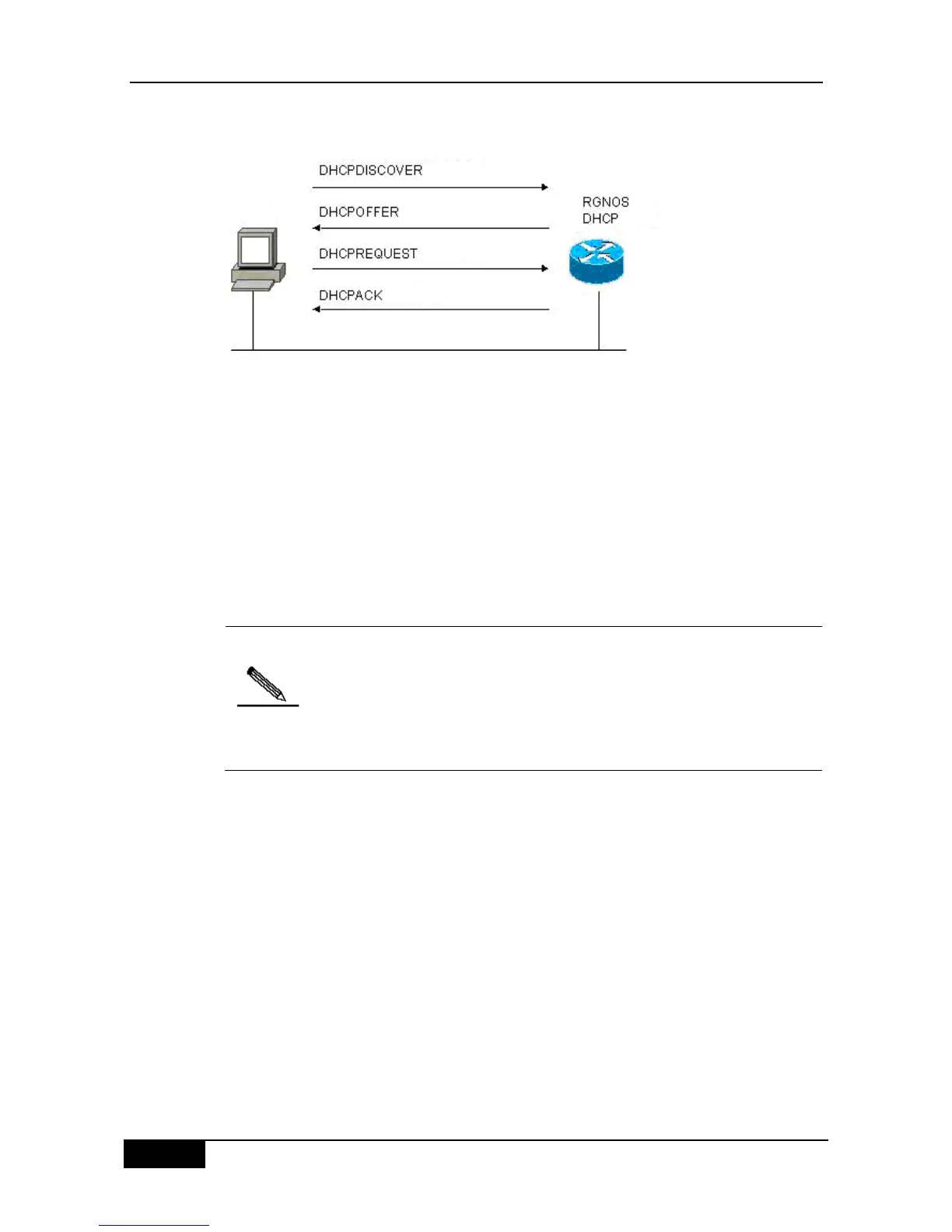Chapter 20 DHCP Configuration DGS-3610 Series Configuration Guide
Server
Host
(Broadcast packet)
(Unicast packet)
(Unicast packet)
(Broadcast packet)
Process of DHCP requesting an IP address:
1. The host sends a DHCPDISCOVER broadcast packet to locate a DHCP server in the
network;
2. The DHCP server sends a DHCPOFFER unicast packet to the host, including IP address,
MAC address, domain name and address lease period;
3. The host sends a DHCPREQUEST broadcast packet to formally request the server to
assign the provided IP address;
4. The DHCP server sends a DHCPACK unicast packet to the host to confirm the request of
the host.
The DHCP client may receive DHCPOFFER packets from multiple
DHCP servers, and accept any DHCPOFFER packet. However, the
client usually accepts the first received DHCPOFFER packet only. The
address specified in DHCPOFFER from the DHCP server is not
necessarily the finally assigned address. Generally, the DHCP server
reserves this address until the client sends a formal request.
A broadcast packet is used to formally request the DHCP server to assign an address, so
that all the DHCP servers that send DHCPOFFER packets also receives this packet and
release the IP address that is offered to the clients.
If the DHCPOFFER packet sent to the DHCP client contains invalid configuration
parameters, the client sends a DHCPDECLINE packet to refuse the assigned configuration
information.
During negotiation, if the DHCP client does not respond to the DHCPOFFER packet in time,
the DHCP server will send a DHCPNAK message to the DHCP client, which will initiate the
address request process again.
During network construction, using our DHCP server brings the following advantages:
Decrease network access cost. Generally, access using static address assignment is
costly, while access using dynamic address assignment costs less.

